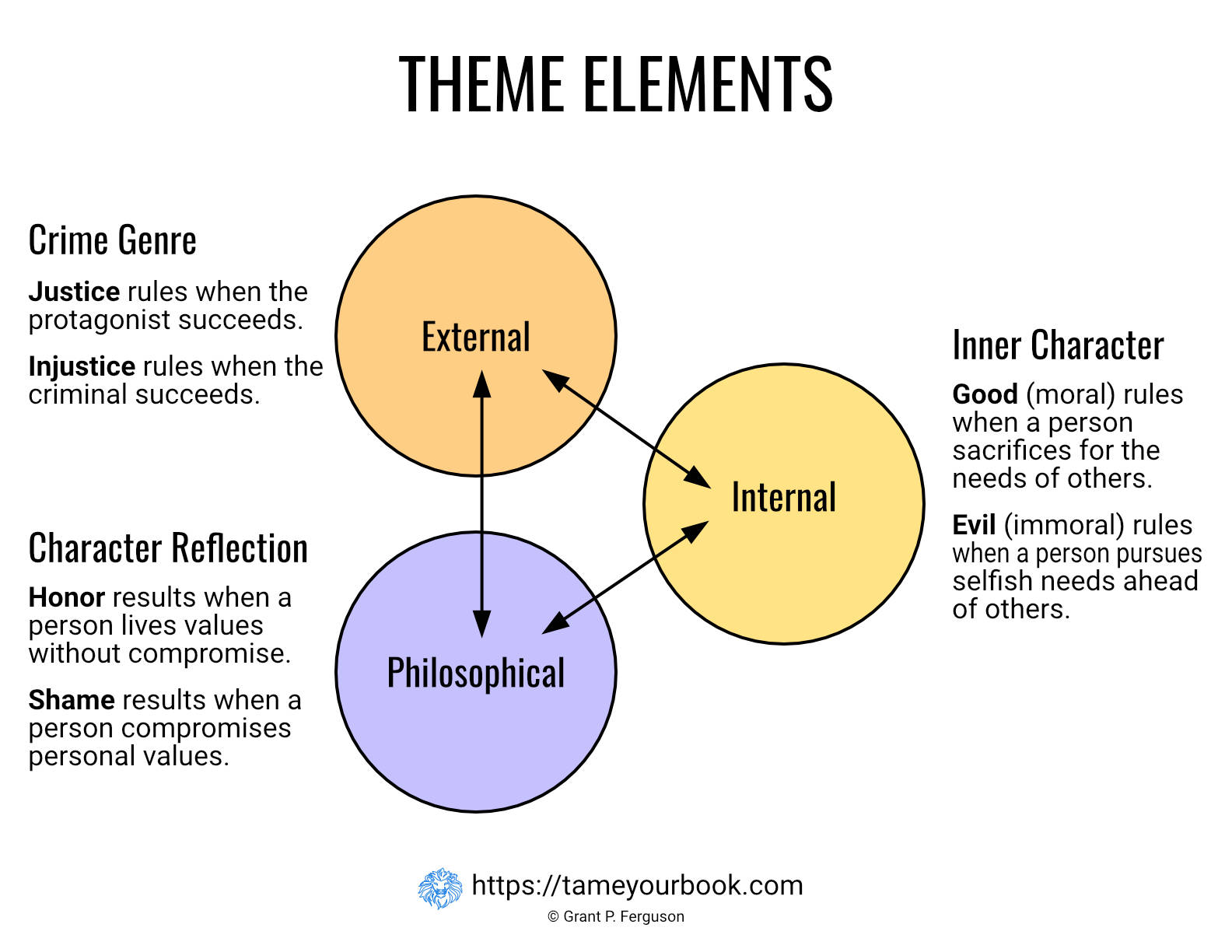Thematic elements—such as character development, symbolism, and conflict—play a crucial role in shaping the message of a story, making it more than just an entertaining plot.
In this article, we’ll dive into the importance of thematic elements in storytelling and explore how they work to weave depth into narratives. We’ll also discuss common themes found in literature and film, as well as how they contribute to the overall storytelling experience.
What Are Thematic Elements?

Thematic elements are the components that help convey a story’s underlying message or central idea. These include characters, conflicts, settings, symbols, and plot twists. Each of these elements contributes to the development and delivery of a theme in the narrative. Here are some examples of thematic elements in stories:
-
Characters: Characters’ personal journeys often mirror the central theme. A protagonist’s development or downfall can embody the story’s core ideas, such as redemption, loss, or the search for identity.
-
Conflict: Conflict drives the plot and often ties directly into the theme. It can be an internal battle, like a character wrestling with moral choices, or an external conflict between characters or society.
-
Setting: The setting of a story—whether it’s time, place, or social environment—can reflect and reinforce the story’s theme. For example, a dystopian society often highlights themes of freedom or government control.
-
Symbolism: Symbols in a narrative often represent thematic concepts. For instance, the use of a bird in a story might symbolize freedom or escape, connecting to themes of liberation or hope.
-
Plot: The events of the story usually help reinforce or explore the theme. A character’s actions and decisions reflect the deeper moral questions the narrative knowledge is addressing.
How Do Themes Develop in a Narrative?
Themes are not always explicitly stated but are gradually revealed through the events, characters, and conflicts within the story. Here’s how themes typically develop:
-
Introduction: The theme is introduced early in the story, either subtly or directly, through the protagonist’s goals, dilemmas, or the setting. In The Great Gatsby by F. Scott Fitzgerald, the theme of the American Dream is introduced early, setting the stage for its exploration throughout the novel.
-
Development: As the story progresses, the theme becomes more prominent. The protagonist faces challenges that force them to confront the central theme. In To Kill a Mockingbird by Harper Lee, the theme of racial injustice becomes clearer as Scout and her family navigate prejudice and the legal system.
-
Resolution: By the end of the narrative, the theme is often either resolved or left open for interpretation. The resolution could come in the form of a lesson learned, a moral conclusion, or the acceptance of an unresolved question, leaving the audience to reflect on the story’s message.
Why Are Themes Important?
Themes are vital because they give a story meaning beyond mere entertainment. They serve several key purposes:
-
Depth and Emotional Engagement: Themes allow stories to go beyond surface-level plots, offering deeper insights into life, society, and the human condition. For example, in Harry Potter and the Philosopher’s Stone, the theme of friendship and bravery elevates the narrative and encourages readers to reflect on their own values.
-
Character Development: Thematic elements guide character arcs, helping to shape a character’s journey. As characters grow, they reflect the larger themes of the story. For instance, in The Catcher in the Rye by J.D. Salinger, Holden Caulfield’s struggles with identity and loss explore the theme of adolescence and the search for meaning.
-
Cultural and Universal Appeal: Strong themes can transcend cultural and temporal boundaries, making a story resonate with people from all walks of life. The themes in Les Misérables, like justice and sacrifice, continue to engage audiences worldwide, regardless of time or place.
-
Engagement with the Audience: Themes prompt the audience to think critically about the world and their place in it. Stories with strong themes challenge audiences to reflect on their own lives, beliefs, and choices, as seen in stories like 1984 by George Orwell, which explores the dangers of totalitarianism and surveillance.
Common Themes in Literature and Film
Certain themes recur throughout literature and film, often because they resonate with universal human experiences. Here are some of the most common:
-
Good vs. Evil: A classic theme, often explored in genres like fantasy or drama, where the struggle between good and evil takes center stage. Examples include The Lord of the Rings and Star Wars.
-
Love and Sacrifice: This theme explores selflessness and the power of love. It can be seen in classic works like Romeo and Juliet by William Shakespeare or in modern stories like The Fault in Our Stars by John Green.
-
Identity and Self-Discovery: Many narratives explore characters’ journeys of personal growth and self-understanding. Books like The Catcher in the Rye and The Alchemist by Paulo Coelho delve into the theme of discovering one’s true identity.
-
Power and Corruption: This theme examines how power influences individuals and societies. In works like Macbeth by William Shakespeare or Animal Farm by George Orwell, the corrupting influence of power is a central focus.
-
Fate vs. Free Will: Stories that explore whether characters have control over their destinies, like Oedipus Rex by Sophocles or The Matrix films, raise questions about fate and free will.
How Themes Impact the Audience
Themes influence how audiences perceive and engage with a story. A well-developed theme connects emotionally with the audience, leaving them with a lasting impression. Here are some ways themes impact the audience:
-
Emotional Connection: When audiences connect with a theme, they often feel more emotionally invested in the story. For example, themes of love, loss, and hope in films like The Pursuit of Happyness deeply resonate with viewers, evoking feelings of empathy.
-
Thought-Provoking Discussions: A strong theme can spark thoughtful discussions, debates, and reflections. Themes like those in The Hunger Games, which touches on the ethics of violence and survival, invite audiences to consider real-world implications.
-
Cultural Relevance: Themes that tackle relevant social or political issues can influence public opinion or even inspire social change. For example, themes of racial inequality in To Kill a Mockingbird or the fight for gender equality in The Handmaid’s Tale have sparked important conversations about justice and human rights.
Conclusion
Themes are an essential part of storytelling. They provide depth, meaning, and relevance, making stories more than just entertainment. Thematic elements work together to create a cohesive narrative, guiding characters, plot, and conflict while engaging the audience emotionally and intellectually. By exploring universal themes like love, power, identity, and justice, storytellers can connect with audiences on a profound level, prompting them to reflect on their own beliefs and experiences. Whether in books, films, or plays, themes are what give a story its lasting impact, ensuring that it remains meaningful long after the final scene or page.
Discover delicious recipes, helpful tips, and everyday inspiration. Visit Blessed Beyond Words for food ideas and practical life insights!








